What’s in Season & MUST Eat in Summer in Japan? 8 Seasonal Veggies (Part 2 of 3)
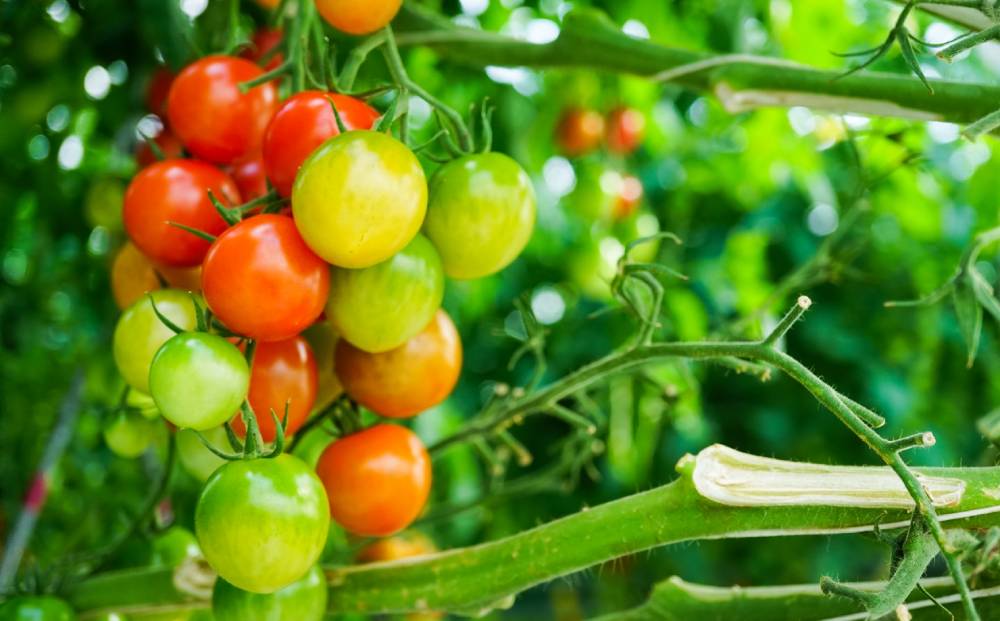

Which vegetables are delicious and fresh in summer in Japan?
旬 (shun/seasonality) is very important in Japanese cuisine and culture. Certain foods are freshest, most flavorful, and most nutritious when they are in season.
Seasonal foods grown with the best blessings of the sun and the earth are high in nutritional value and healthy. In addition, seasonal foods are cheaper because large quantities are harvested at that time. There’s no reason not to have seasonal foods!
Let’s check the seasonal vegetables in July. Some are probably uncommon outside of Japan.

I’ve listed all the kanji, hiragana, and katakana, so I hope it will be helpful for shopping in Japan.
Shishito green pepper
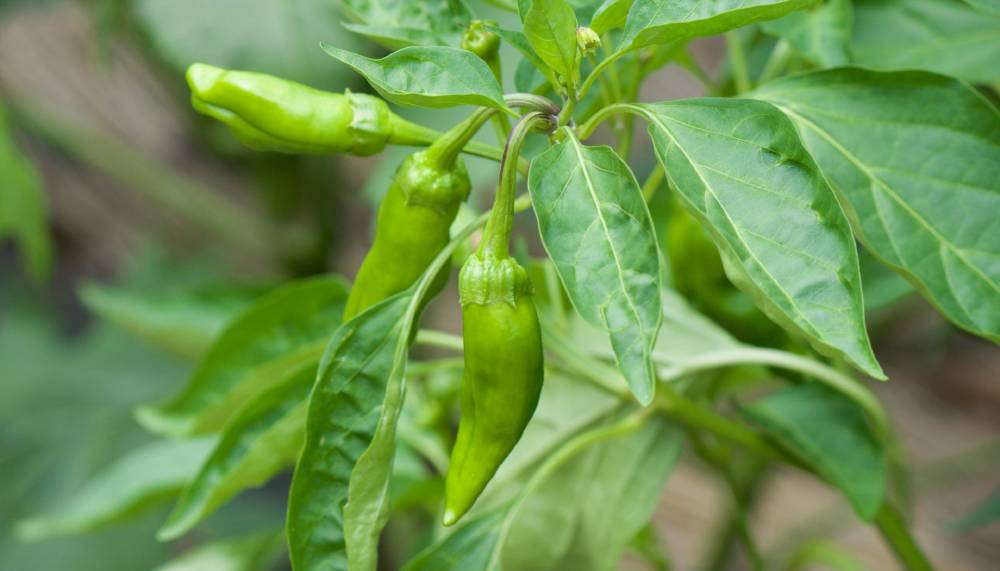
- Kanji: 獅子唐
- Hiragana: ししとう
- Katakana: シシトウ
- Pronunciation: shishito
Shishito green pepper or sweet green pepper is a small green pepper-like vegetable, and it’s not spicy.
Green chills are also in season in July and I have mentioned in part 1. Both green chill and shishito are similar in shape and color, but there is a difference. The spicy varieties are called “green chill“, and the non-spicy and sweet varieties are called “shishito“. Shishitos are similar to green peppers and bell peppers, so they are not as spicy as chili peppers.
Often grilled or deep-fried. You may have had it at a “Yakitori (Japanese-style skewered chicken)” restaurant.
Generally, only available at grocery stores or supermarkets in summer.
- β-carotene
- vitamin C, P
- capsaicin
- potassium
Shiso leaves
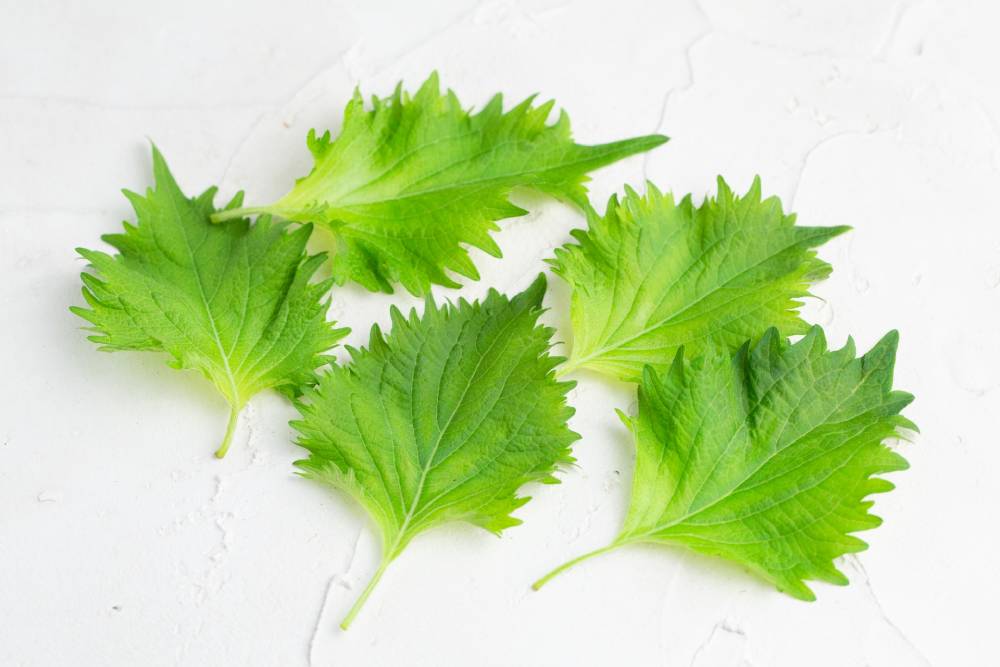
- Kanji: 大葉/青紫蘇
- Hiragana: おおば/あおじそ
- Katakana: オオバ/アオジソ
- Pronunciation: oba/aojiso
Green shiso leaves or perilla are Japanese herbs from the same family as mint. It doesn’t taste like mint though. You may have seen it as a garnish of sashimi or sushi.
It is a summer vegetable, but you’ll easily find shiso leaves in any season. They are cultivated in a greenhouse.
- β-carotene
- vitamin B, E, C, K
- calcium
- potassium
Red shiso leaves
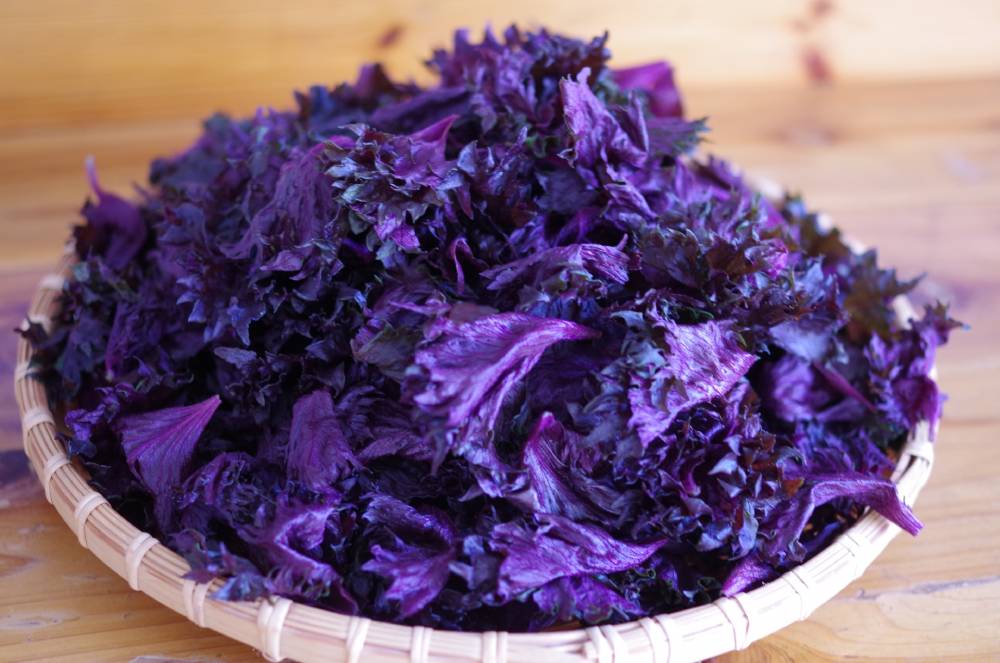
- Kanji: 赤紫蘇
- Hiragana: あかしそ
- Katakana: アカシソ
- Pronunciation: akashiso
Shiso leaves are available in both red and green varieties. Red shiso leaves or red perilla taste totally different from Green shiso leaves. It is usually pickled with umeboshi (Japanese salt plums). Usually pickled or boiled because it has a harsh taste called “Egumi”.
I love red “shiso leaves juice”. You boil some red shiso leaves for 15-20 mins and add some vinegar and sugar. It’s sour and sweet, tastes similar to hibiscus tea.
Only sold in summer.
- β-carotene
- vitamin A, C, E
- calcium
- potassium
- iron
- folate

It looks purple rather than red.
Young Ginger Root
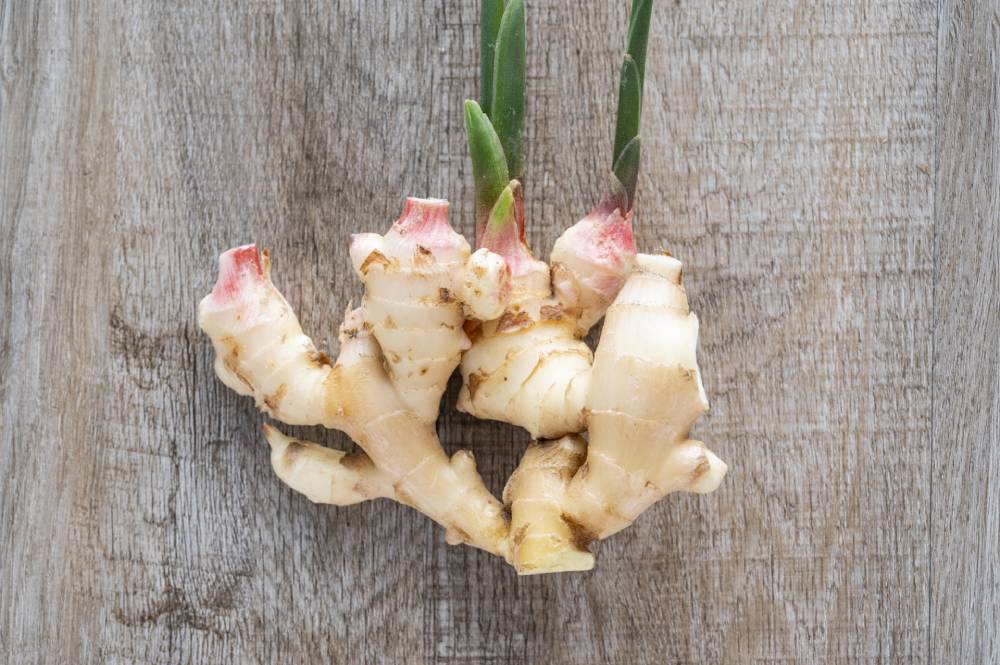
- Kanji: 新生姜
- Hiragana: しんしょうが
- Katakana: シンショウガ
- Pronunciation: shinshoga
Young ginger is planted in spring and harvested in summer, while general ginger is harvested in autumn, and stored for several months. Ginger in general is fibrous and has a strong pungent taste, but young ginger has lower pungent taste with a high water content. It is often used for “gari (a garnish of sushi)” at sushi restaurants.
General gingers are available in any season, but young gingers are only available in summer.
- cineole
- gingerol
- fiber
- potassium
- magnesium
- rin
There is no big difference in nutrition between young ginger and general ginger.
Zucchini

- Kanji does not exist in Japanese.
- Hiragana: ずっきーに
- Katakana: ズッキーニ
- Pronunciation: zucchini
Zucchini is a summer squash indispensable for western-style food. In particular, it is used for ratatouille, which is a Southern French dish, and caponata, which is an Italian dish. It is also becoming popular in Japanese dishes.
- potassium
- vitamin C, B group
- β-carotene
- fiber
- calcium
- magnesium
Corn
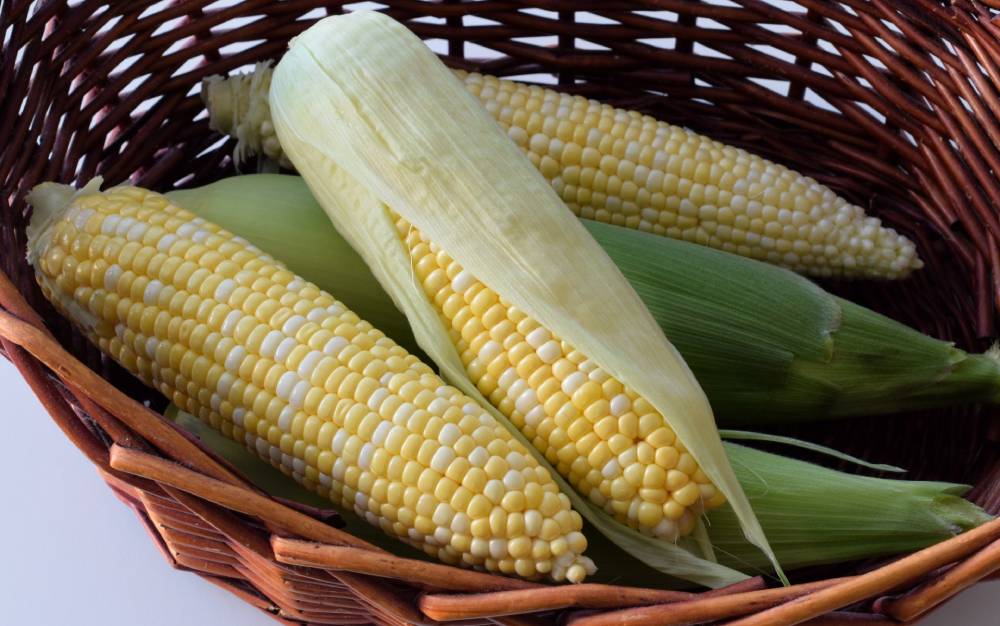
- Kanji: 玉蜀黍 (Kanji is not commonly used.)
- Hiragana: とうもろこし
- Katakana: トウモロコシ
- Pronunciation: tomorokoshi
Corn can be categorized as both vegetable and grain. I love “yaki tomorokoshi”. It is grilled corn on the cob with butter and soy sauce.
Generally, only sold at grocery stores or supermarkets in summer.
carbohydrate
vitamin B1, B2, E
linoleic acid
fiber
calcium
magnesium
Tomato

- Kanji: 蕃茄 (Kanji is not commonly used.)
- Hiragana: とまと
- Katakana: トマト
- Pronunciation: tomato
Try “フルーツトマト (Fruit tomato)” if you find it at a grocery store. “Fruit tomato” is a tomato with high sugar content and low water content so it is really sweet, literally like fruits. It was invented in Kochi but now you can find it all over Japan.
It is easy to find tomatoes in any season. But, those in summer are better and cheaper.
lycopene
vitamin A, C, E
potassium
fiber
Eggplant
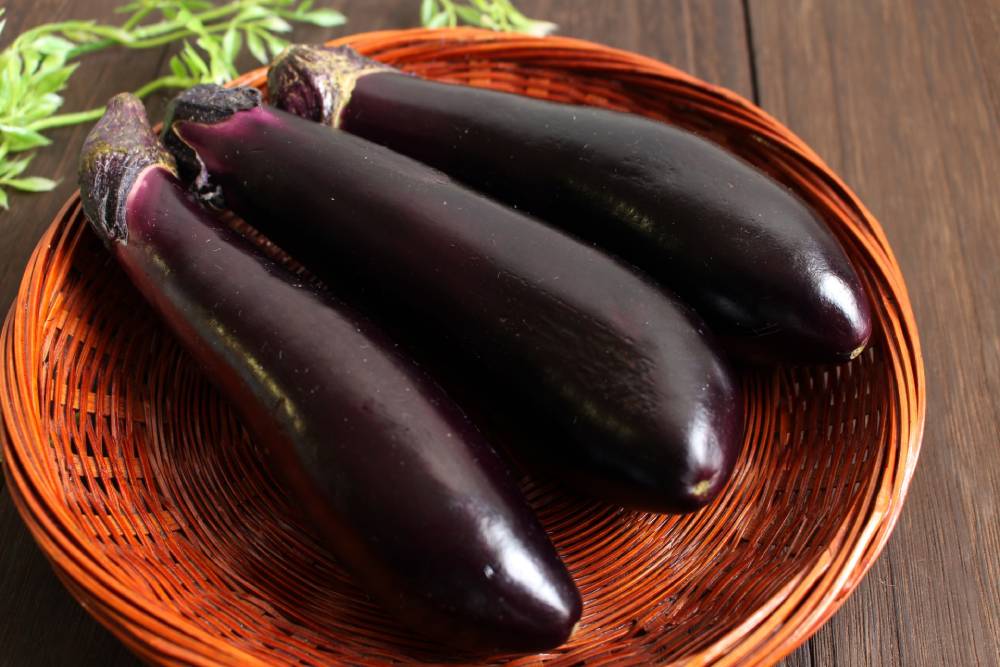
- Kanji: 茄子
- Hiragana: なす
- Katakana: ナス
- Pronunciation: nasu
Eggplants contain lots of moisture. The moisture in eggplant cools the body and eliminates the heat from your body.
I love “yaki nasu“, grilled eggplant. You grill some eggplants, peel the skin off, and cool down in the fridge. Serve with katsuobushi (dried bonito flakes) and soy sauce or dashi.
It’s not hard to find eggplants in any season, but those in summer are fresher and cheaper.
fiber
potassium
nasunin (polyphenol)
Summary
| Vegetable names | The best season in |
| Shishito green pepper | June July August |
| Green shiso leaves | June July August September |
| Red shiso leaves | June July |
| Young Ginger Root | June July August |
| Zucchini | June July August September |
| Corn | July August |
| Tomato | June July August |
| Eggplant | July August September |

Thank you for reading! Enjoy seasonal vegetables and enjoy summer!
What’s in Season & MUST Eat in July in Japan? (8 Seasonal Veggies part 1)
 Comment
Comment

 Home
Home 01/10/2023
01/10/2023